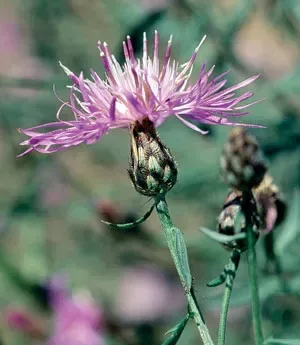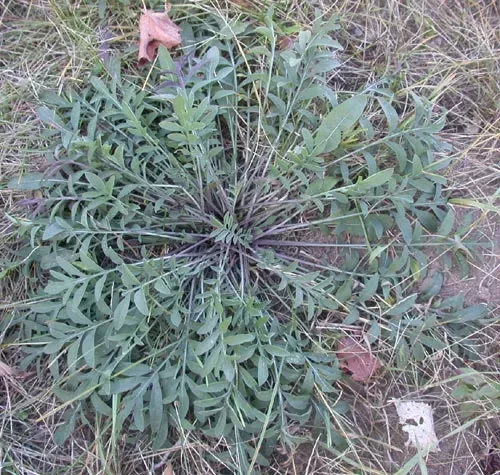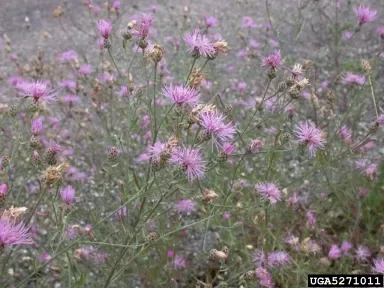
Spotted knapweed is an herbaceous biennial, although it may live for up to nine years. In its first year it grows in a basal rosette with 6-8” leaves. In every year after that, it can grow up to 3 ft. tall with flowers growing at the ends of its many branching stems. Its thistle-like flowers are purple, with a spotted appearance on the base. Each plant can produce up to 1000 seeds, which are then dispersed by the wind.


Spotted knapweed produces a thick taproot, allowing it to acquire water and nutrients in poor soils. This plant will colonize heavily disturbed sites, shale, sand dunes and rocky soils. Spotted knapweed will invade meadows, prairies, abandoned fields and forest floors where sunlight reaches through the canopy.


Because it is a pioneer species, spotted knapweed can rapidly spread in disturbed areas to the exclusion of all other plants. It can also invade undisturbed habitats because it germinates and grows very early in the spring, and has phytotoxic, or plant-killing, effects on other species. Due to its low palatability, spotted knapweed reduces forage for livestock and wildlife. This plant has also been linked to increased soil erosion.

A variety of insects and fungi have been introduced and are available as biocontrols for spotted knapweed, used to varying success. Several herbicides are also effective in reducing numbers of spotted knapweed, although its substantial seed banks require continued monitoring. Its seeds are heat-resistant, very high temperatures must be achieved to control spotted knapweed by burning or compost.
